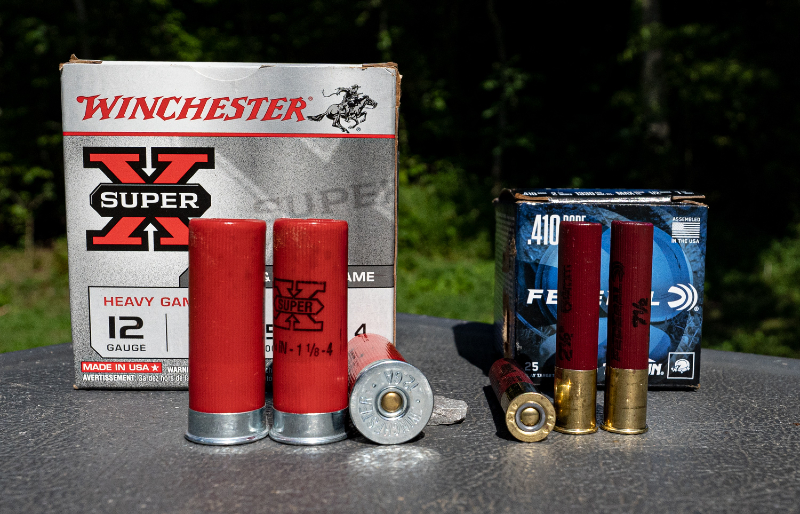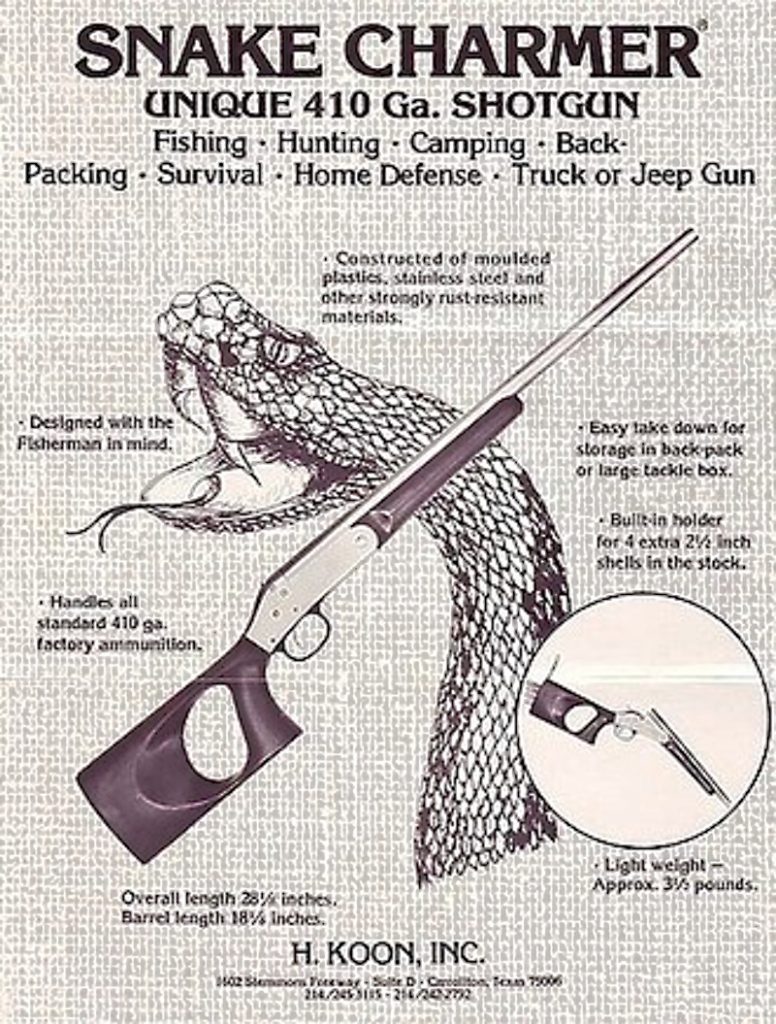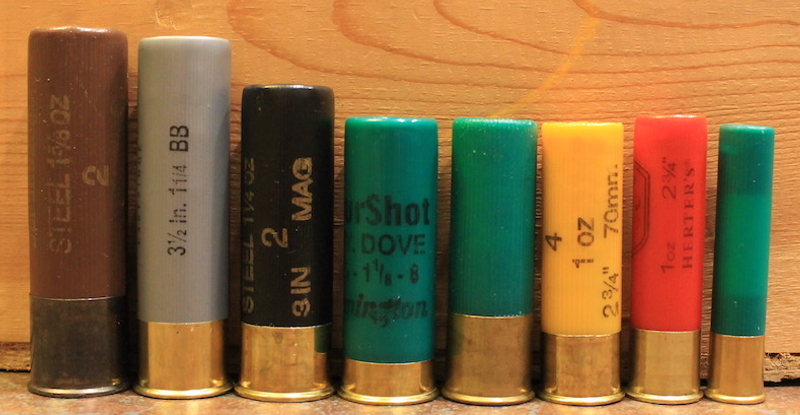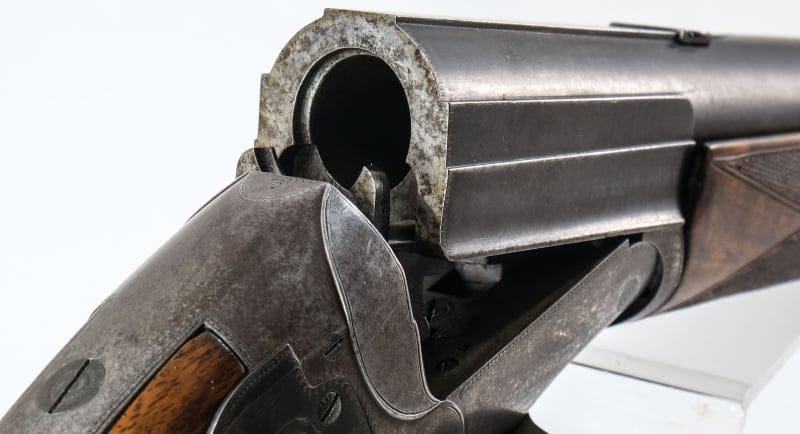When you’re talking about guns, the question of caliber comes up on a regular basis. And while there are some nuances between caliber and cartridges that sometimes get confused, that’s nothing compared to shotgun confusion. It’s important to understand that shotguns are measured by gauge or bore, not caliber. Interested in being sure you know what you’re talking about when shotguns are the topic? Read on for more details.

What is Gauge?
In the gun world, “gauge” refers to shotgun chamberings. Gauge is based on the diameter of the bore of the barrel. It’s actually a method that reaches back quite a ways to when gun owners were pouring their own lead balls. Gauge was determined by how many lead balls of a size that fit inside the bore of the gun it would take to equal one pound of lead.
For example, it takes 12 lead balls to equal one pound of lead for a 12 gauge and 10 lead balls to equal one pound of lead for a 10 gauge. The smaller the number used to describe the bore size, the bigger the actual gauge. After all, as one might imagine, one pound of lead will be divided into a larger number of balls to fit into a narrower space, and vice versa.
Although loading practices and ammunition have evolved a great deal, the gauge designation has remained. Of course, there is one exception to the gauge rule: .410 bore.
What is .410 Bore?

.410 bore is the smallest of the shotshells. It’s also the one size with a bore designation rather than gauge. This size has similar base dimensions to the 45 Colt, which is noteworthy because that means there are quite a few guns on the market that take both .410 bore and 45 Colt. However, it’s important to understand not all guns chambered for one can safely cycle the other.

Unlike its gauge-defined friends, the .410 gets its name directly from the dimensions of the bore of the gun. Yes, the barrels have a .410 inch diameter. If it was given a gauge designation it would be something like a 67 gauge. The .410 bore was originally made for what was then known as a garden gun which was quite literally a firearm made to dispatch small pests such as snakes and moles that invaded gardens.
What gauge is best for self-defense?

Deciding what gauge shotgun is best for your personal self-defense use depends on the situation. It’s worth mentioning that the ideas that a .410 bore is best for home defense, or that birdshot is ideal for defending yourself from an attack, are inherently wrong. Larger gauges remain better for defensive purposes. That is not to say a .410 bore could never get the job done defending your life, only that it tends to be less effective. There are some loads being produced that are more capable than others, though, so take the time to research the ammunition you intend to use.
Distance is another thing to take into account when selecting a shotgun as your home defense weapon. Assuming you’re using buckshot, you need to keep in mind that it takes time for the shot to separate from the wad and pattern. At closer distances, it will impact targets in a much tighter pattern, not a broader one with multiple points of impact. Before using your shotgun for self-defense, take the time to familiarize yourself with how it patterns using the specific defensive load you’ve chosen. You should be patterning it at varying distances based on the size of your home and the most likely ranges at which you’d be firing.
What shotgun gauges are there?

There have been more shotgun gauges over time than you might realize. Six of them—five gauges, and one bore—are the most commonly used today:
10 gauge
This gauge of shotguns have 0.775-inch diameter bores. Although there have been larger gauge/bore shotguns made, the 10 gauge is perhaps the largest still in somewhat common use. It’s favored by some hunters, usually those after game like geese or cranes.
12 gauge
Everyone knows the 12 gauge. It’s the most popular gauge out there and there are basically endless options available for it. The 12 gauge shotgun has a 0.729-inch diameter bore and is used for everything from personal defense to hunting to skeet shooting.

16 gauge
This is among the gauges used less frequently but still occasionally seen on the range or out hunting. Ever so often one is spotted during a duck hunt. The 16 gauge has a 0.662-inch diameter bore.
20 gauge
Often touted as the best option for teaching kids about shotguns, 20 gauge is basically the next popular right behind 12 gauge. It has a bore diameter of 0.615 inches.
28 gauge
Frequently favored by upland bird hunters, 28 gauge continues to see regular use. It has a bore diameter of 0.550 inches.
410 bore
The one shotgun in the United States referred to be bore rather than gauge, the .410 was originally a garden gun chambering. It has a bore diameter of 0.410 inches, of course.

How is gauge calculated?
If you’d like to get more in-depth with calculating gauge, Wikipedia provides useful information for both calculating and understanding gauge:
Explanation
- Divide 1 pound by n to find the mass of each one of the balls
- Divide it by 0.4097 lb/in3 (density of lead) to find the volume of each ball>
- Multiply it by 3/4 and divide it by pi, then find its cube root (rearranged from the volume of a sphere equation) to find the radius of each ball
- Multiply it by 2 to change from radius to diameter
| 1 Pound / gauge = weight of lead sphere | Diameter of bore is then measured | ||
| gauge | pounds | mm | inches |
| 0.25 | 4 | 67.34 | 2.651 |
| 0.5 | 2 | 53.45 | 2.103 |
| 0.75 | 1+1/3 | 46.70 | 1.838 |
| 1 | 1 | 42.42 | 1.669 |
| 1.5 | 2/3 | 37.05 | 1.459 |
| 2 | 1/2 | 33.67 | 1.326 |
| 3 | 1/3 | 29.41 | 1.158 |
| 4 | 1/4 | 26.72 | 1.052 |
| 5 | 1/5 | 24.80 | 0.976 |
| 6 | 1/6 | 23.35 | 0.919 |
| 6.278 | 1/6.278 | 23.00 | 0.906 |
| 7 | 1/7 | 22.18 | 0.873 |
| 8 | 1/8 | 21.21 | 0.835 |
| 9 | 1/9 | 20.39 | 0.803 |
| 10 | 1/10 | 19.69 | 0.775 |
| 11 | 1/11 | 19.07 | 0.751 |
| 12 | 1/12 | 18.53 | 0.729 |
| 13 | 1/13 | 18.04 | 0.710 |
| 14 | 1/14 | 17.60 | 0.693 |
| 15 | 1/15 | 17.21 | 0.677 |
| 16 | 1/16 | 16.83 | 0.663 |
| 17 | 1/17 | 16.50 | 0.650 |
| 18 | 1/18 | 16.19 | 0.637 |
| 20 | 1/20 | 15.63 | 0.615 |
| 22 | 1/22 | 15.13 | 0.596 |
| 24 | 1/24 | 14.70 | 0.579 |
| 26 | 1/26 | 14.31 | 0.564 |
| 28 | 1/28 | 13.97 | 0.550 |
| 32 | 1/32 | 13.36 | 0.526 |
| 36 | 1/36 | 12.85 | 0.506 |
| 40 | 1/40 | 12.40 | 0.488 |
| 67.62 | 1/67.62 | 10.41 | 0.410 |
What shotgun gauge is best?

The “best” gauge depends on what you intend to use it for and also on your personal shooting skills. As one might expect, larger gauges like 8 or 10-gauge produce more felt recoil than a 20-gauge. There are myriad reasons someone might want or need a softer-shooting shotgun including shoulder injuries, arthritis, or personal preference. Whatever gauge you choose, make sure you understand what it can and cannot do.
A common misconception of shotguns is that they’re basic point-and-shoot weapons, but they really do require practice. Just like any firearm, shotguns work best when the user knows what they’re doing, meaning it’s a good idea to get some training and practice with yours.
What’s your favorite shotgun gauge?


![{\displaystyle d_{n}=2{\sqrt[{3}]{{\frac {3}{4\pi }}{\frac {1\mathrm {~lb} /n}{0.4097\mathrm {~lb/in^{3}} }}}}}](https://gunmagwarehouse.com/blog/wp-content/plugins/wp-fastest-cache-premium/pro/images/blank.gif)
